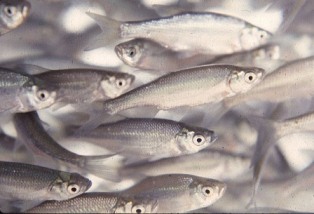Fertilizers suitable for farm pond use are available in liquid or granular form. Liquids are generally cheaper than granules and are superior in promoting phytoplankton growth in ponds. Granular fertilizers, however, may be more readily available than liquids in some areas. Phosphorus (P) is the most important nutrient in pond fertilizers and usually gives a much greater increase in fish production than nitrogen or potassium. An ideal farm pond fertilizer application should contain 4 to 8 pounds of phosphorus and …
I was told I should put lime in my pond. How can I find out how much lime to put in my pond, how to apply it, and what kind of lime I should use?
A soil test, preferably done through your local Cooperative Extension office, will tell you how much lime, if any, your pond requires. A method frequently used with good results is to apply the amount of lime recommended by a soil test, then apply one-fourth of that amount each succeeding year to keep lime requirements satisfied. A liming treatment may last almost indefinitely in ponds with no outflow, but most ponds have at least some water discharge or are drained and …
If algae produce oxygen in a pond, how can having too much algae cause an oxygen depletion?
Like all green plants, algae produce oxygen during the daylight hours as a by-product of
photosynthesis. This is usually a major source of oxygen in fish ponds. In darkness, however, all plants consume oxygen, including algae. Algae blooms in natural water bodies or fish ponds normally produce much more oxygen in the daylight than they consume during the night, but some situations reduce the amount of oxygen a bloom produces without reducing its nighttime oxygen consumption. Trace minerals or nutrients …
My pond is full of trash fish. How can I kill them without draining it?
Sooner or later, many ponds become contaminated with undesirable species such as bullheads, carp, buffalo, crappie, or green sunfish. Alternatively, bass-bluegill ponds may go so far out of balance that only stunted bream populations remain. In this situation, ponds may have to be drained and dried and a new stocking program established. When draining is not possible or too costly, an acceptable alternative may be to kill all fish present with a compound labeled and approved for killing fish. This …
